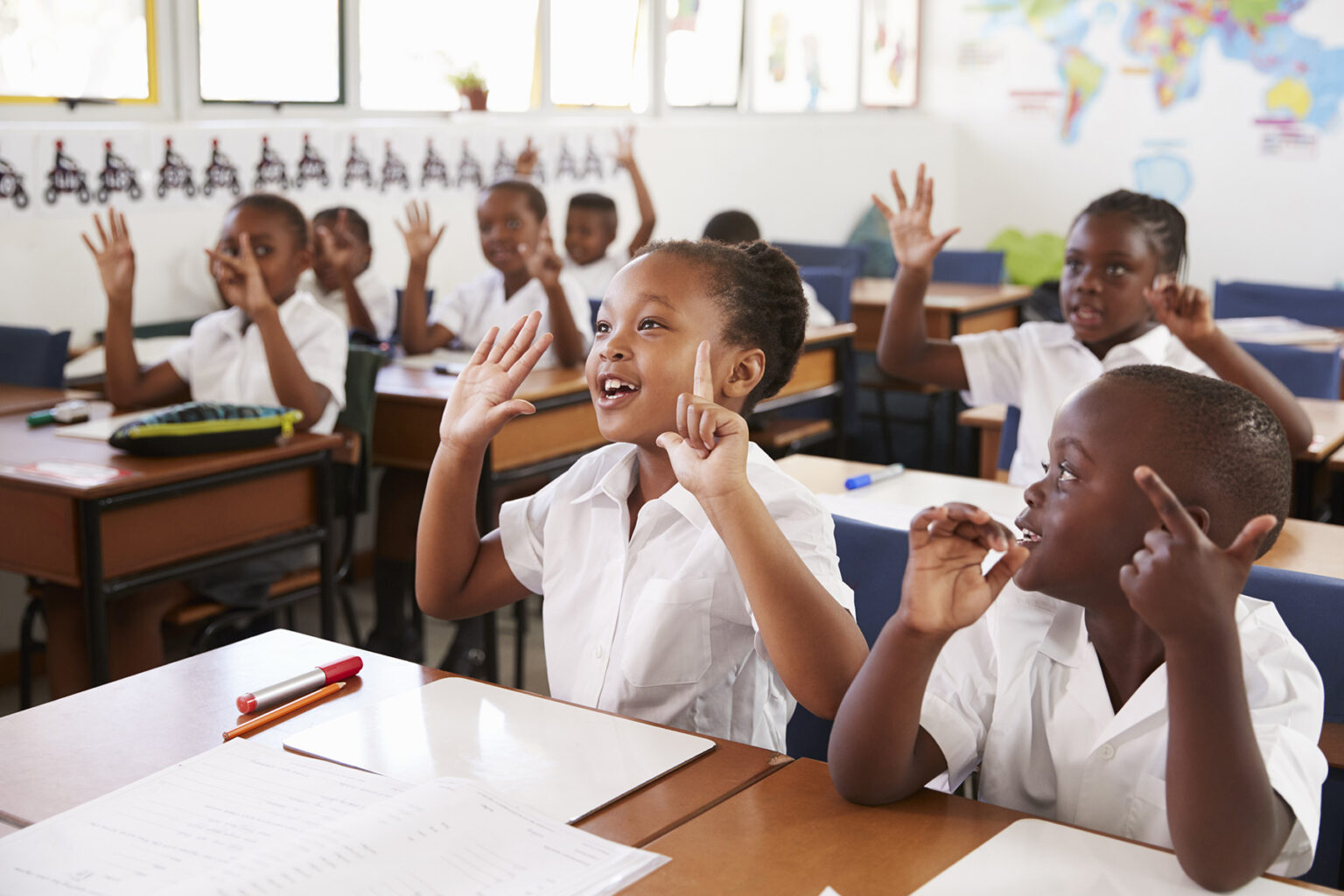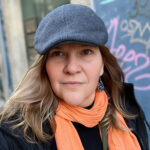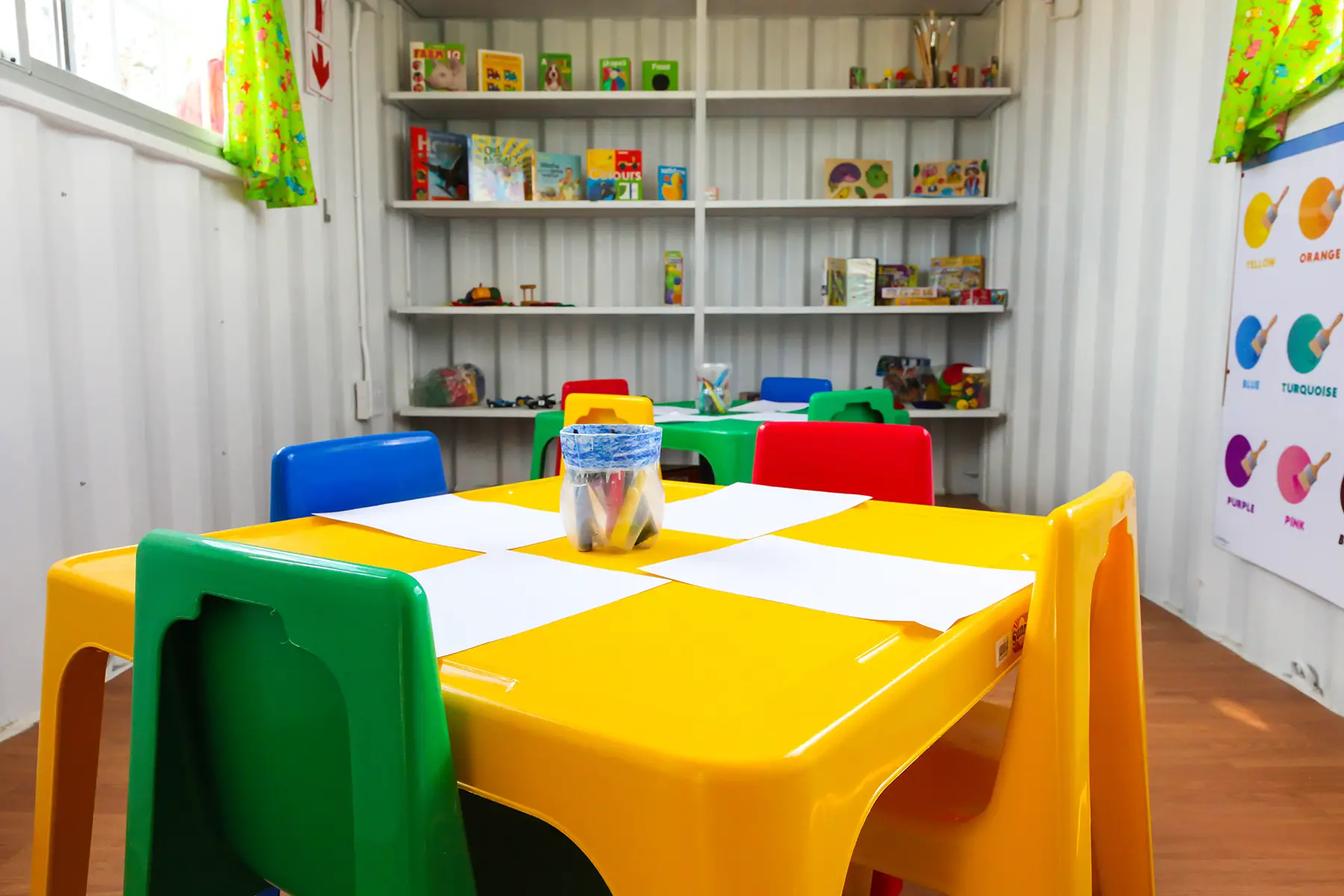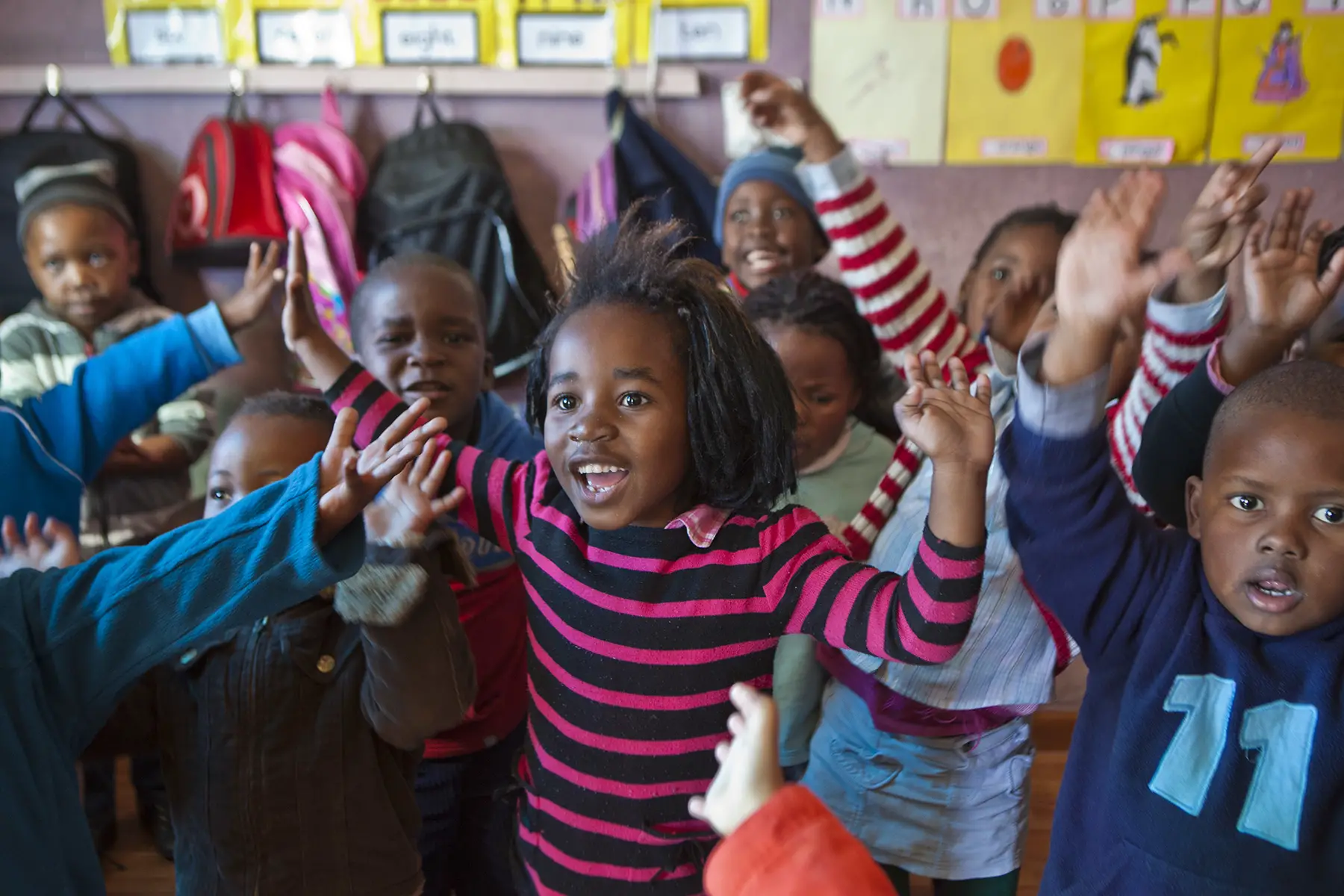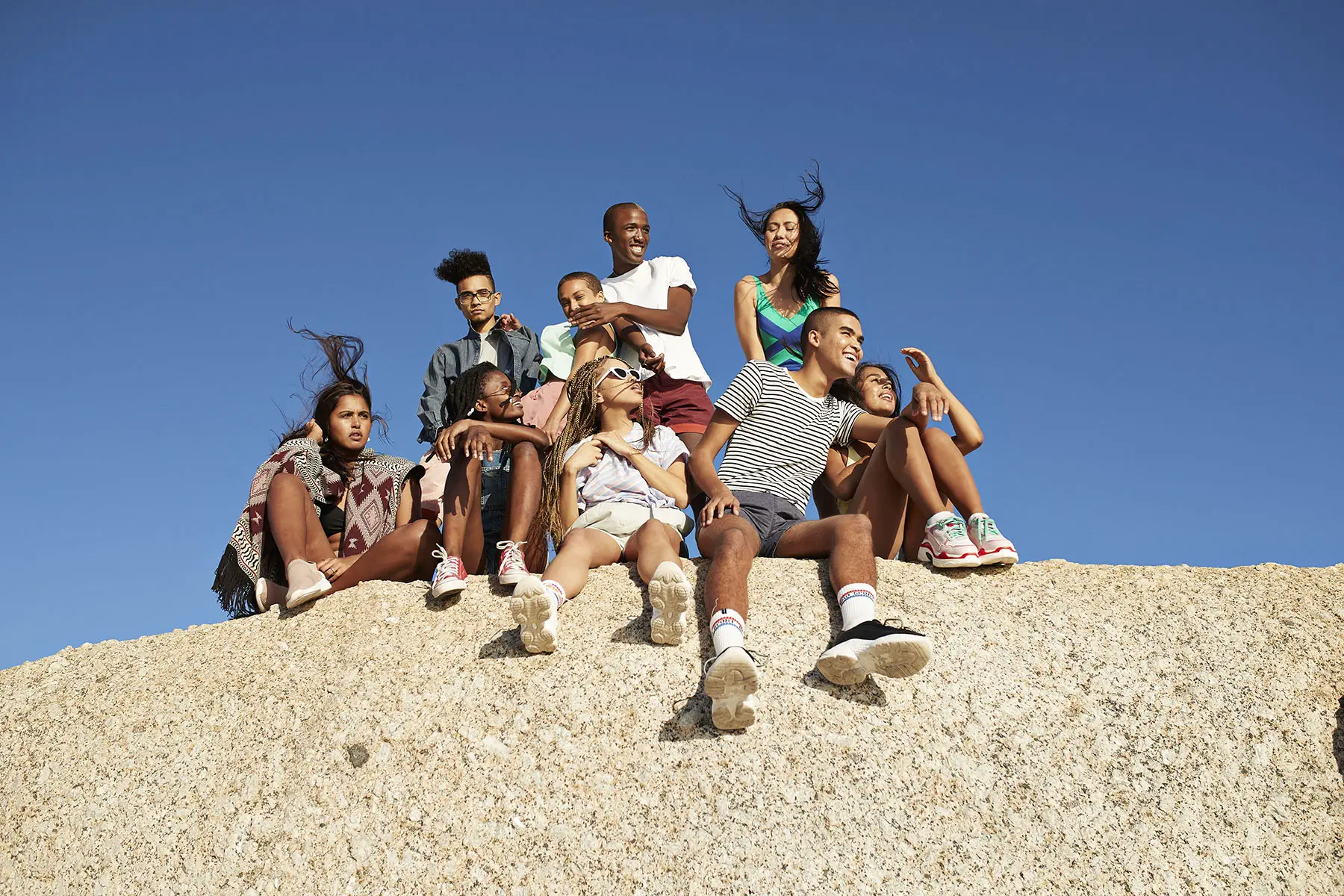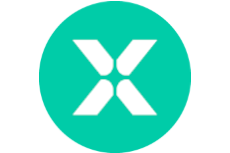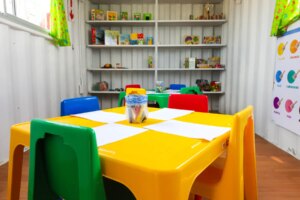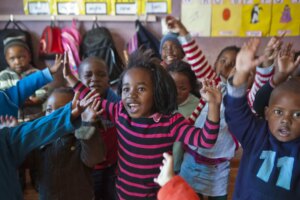Basic education in South Africa includes primary and secondary schools. As a newcomer with school-aged children, you can enroll them in public or independent facilities, depending on your preference, financial ability, and needs.
Confidently navigate the education system in South Africa and understand its unique challenges by exploring the following topics:
- The education system in South Africa
- Stages of education in South Africa
- Types of schools in South Africa
- Educational support in South Africa
- Homeschooling in South Africa
- Tests, examinations, and graduation in South Africa
- Changing schools in South Africa
- Parent involvement in schooling in South Africa
- Useful resources
The education system in South Africa
The education system in South Africa includes public, independent, and international schools. However, the majority of local children attend state schools. According to the latest data from Census 2022, the total number of students enrolled in the education system is around 13.4 million, with 12.7 million learners in public schooling, accounting for nearly 95% of the total.

Children’s education in South Africa is mandatory from Grade R to Grade 10–12 (i.e., ages 5–6 to 16–18).
The Department of Basic Education (DBE) regulates early child development (ECD) programs, which include pre-primary and primary schools (Grades R to 8) and secondary schooling (Grades 9 to 12). Under this national umbrella, regional DBE offices manage local schools and implement policy in each of the nine provinces and 86 districts.
The school year runs from January to December across four terms (annual dates vary):
- Term 1: January to March
- Term 2: April to June
- Term 3: July to September
- Term 4: October to December
Of course, independent and international schools will follow their own calendar.
Funding of education
In South Africa, public education is primarily funded by the government, supplemented by school fees, which are parental contributions.
In 2021, South Africa allocated 17% of its total budget to education, compared to the OECD average of 10%. However, its spending per student was $3,578, significantly below the OECD average of $11,560 for primary to tertiary schooling.
While mandatory education was expanded in 2024, the government did not raise funding for the increased number of learners in schools. Controversially, public schools are expected to absorb these changes within their existing budgets.
Quality of public education
According to the South African Constitution (Section 29 par. 1), everyone has the right to access basic education.
However, the stark reality is that vast inequality still exists in society, negatively impacting the overall quality of the public school system, especially in areas where families cannot afford to boost state funding by paying school fees.
For instance, South Africa’s performance in the 2019 Trends in International Mathematics and Science Study (TIMSS) ranked third lowest out of 64 countries at the primary level and second lowest out of 39 countries at the secondary level.
The latest results from the Progress in International Reading Literacy Study (PIRLS, 2021) also revealed concerning trends in young children’s reading and comprehension skills. For example, a significant number of children exiting Grade 1 lacked basic alphabet knowledge, while the majority of Grade 4 students struggled to comprehend written texts.
However, these results should be viewed with caution. The test language is English, which may skew the scores as many students speak another language at home.
In contrast, the national youth (15–24) literacy rate of 97% in 2021 surpassed that of many of its neighbors on the African continent.
Also, according to the 2023 OECD statistics, the percentage of 15 to 19-year-olds enrolled in secondary education exceeds the average:
| School level | South Africa | OECD average |
| Lower secondary education | 32% | 12% |
| Upper secondary education (15–19) | 46% | 37% |
However, around 50% of 25 to 34-year-olds do not have an upper secondary qualification, which is significantly higher than the OECD average of 14%. As such, attaining a lower level of basic education can negatively impact a person’s ability to successfully participate in the labor market and grow in their career.
Corporal punishment in schools
Corporal punishment is illegal in South Africa.
In 2024, the definition of this type of “discipline” has been broadened. It now includes not just physical acts like hitting or smacking but also actions that undermine a child’s dignity. For example, punishments like making students stay in uncomfortable positions or subjecting them to emotional abuse are now also illegal.
Stages of education in South Africa
The pre-primary Reception Year (Grade R) is compulsory to prepare children for primary schooling. After that, basic education in South Africa has four phases across 12 years in primary and secondary schools. It does not include a stage between these, like middle school (e.g., United States), intermediate school (e.g., New Zealand), or collège (e.g., France).
The system is divided into two bands within the National Qualifications Framework (NQF):
- General Education and Training (GET): Primary (Grades 1–7) and Secondary (Grades 8–9)
- Further Education and Training (FET): Secondary (Grades 10–12)
After children complete primary school in Grade 7 (around their twelfth birthday), they move on to secondary education – also known as high school – which can be another three to five years.

In South Africa, children are required to attend school from ages 7 (Grade 1) to 16 or 18 (Grade 10 or 12). Compulsory basic education ends when a student turns 18 or completes Grade 10 or 12, whichever comes first.
Students who complete Grade 12 graduate with the National Senior Certificate (NSC) around their 18th birthday. It is colloquially known as Matric and an important educational milestone for students in the public education system.
The educational stages provide a progressive and comprehensive framework that supports the development of skills necessary for lifelong learning and participation in a global economy. Each phase builds upon the previous one, ensuring that students develop a wide range of competencies.
| Phase | Age | Grade | Learning objectives |
| Pre-Primary Foundation | 5–6 | R | Known as Reception lays a solid foundation for primary schooling, including social development |
| Primary Foundation | 6–8 | 1–3 | Literacy, numeracy, and life skills |
| Primary Junior Primary/Intermediate | 9–12 | 4–6 | Curriculum broadens to include natural and social sciences |
| Secondary Senior | 13–15 | 7–9 | The curriculum expands further and includes specialized subjects |
| Secondary Further Education and Training (FET) | 16–18 | 10–12 | Prepares them for the National Senior Certificate (matriculation) exams, which are crucial for tertiary education or entering the workforce |
Pre-school education in South Africa
A range of pre-school childcare options exists, both government-funded and private. It uses the following terminology, often interchangeably:
- Crèche: A nursery for babies and toddlers (ages 0–4)
- Nursery school: Often called grade 00 or pre-grade R (ages 3–5)
- Pre-school/Pre-primary: Prepare for formal schooling, Grade R (ages 5–6)
Typically, childcare centers in South Africa open from 06:30 to 17:30.
Early Childhood Care and Education (educare) centers, part of a broader network of early childhood development (ECD) facilities, provide preschool education primarily for children from disadvantaged communities. These centers offer high-quality, accessible preschool education to prepare children for primary schooling.
Another initiative, EarlyBird Educare@Work, is a social enterprise that partners with companies and property developers to set up workplace educare centers. It provides working parents with convenient and quality childcare and uses revenue from these centers to subsidize educare facilities in low-income areas.
Primary education in South Africa
Grade 1 to 7 covers the foundation and intermediate phases of learning. Generally, learning facilities are called primary schools. However, some Afrikaans medium schools may use the title Laerskool.
You can find out more by reading our comprehensive article on Primary schools in South Africa.
You will have access to a range of primary schools across the country, including:
- State/public schools (quintiles 1–5)
- Private schools (e.g., Crawford)
- International schools (e.g., American, British, German, and IB curriculums)
- Waldorf (Rudolf Steiner) schools (e.g., Constantia in Cape Town or Michael Mount in Johannesburg)
- Montessori schools (e.g., Buccleuch in Sandton)
- Homeschooling
The Waldorf approach is more prevalent in South Africa than Montessori education, but both types of schools are private and fee-paying.
Secondary education in South Africa
Secondary education – colloquially called high school – follows directly after graduating from primary school. It spans five years (Grades 8 to 12). Afrikaans language schools may call this hoërskool, while Zulu call it isikolo esiphakeme and Xhosa call it isikolo esiphakamileyo.
Students who complete Grades 10 to 12 get their Senior National Certificate, which is a prerequisite if they want to study further. Typically, this is around ages 17 to 18.
During the FET phase (final three years), students can choose between three streams of secondary education:
| Stream | Field of study |
| General academic | Covers a wide range of academic subjects leading to the National Senior Certificate (Matric) exams |
| Technical vocational | Vocational training, which includes practical subjects and apprenticeships, is often provided at technical and vocational education and training (TVET) colleges |
| Technical occupational | Provide practical and vocational skills aligned more directly with specific occupations, addressing the skills shortages in various industries within South Africa (newly introduced track) |
Notably, the Department of Higher Education and Training (DHET) regulates TVET colleges instead of the DBE.
See our article on Secondary schools in South Africa for more information.
Similar to primary schools in South Africa, secondary education is accessible via:
- Public/state schools (quintile 1–5)
- Private schools
- International schools
- Boarding schools (e.g., Michaelhouse, Hilton College, or St. Andrews School for Girls)
- Religious private schools (e.g., Catholic, Jewish, and Muslim)
- Private arts or music schools (e.g., Drakensberg Boys Choir School or National School of the Arts)
- Waldorf schools
- Online, blended, or distance learning (e.g., Skills Academy)
- Abbotts College (an alternative approach)
Types of schools in South Africa
Public schools
The DBE categorizes schools into five quintiles based on the socio-economic status of the communities they serve. This classification aims to foster equality by ensuring that all schools receive the same base level of government funding. However, these subsidies are often insufficient.
Therefore, in schools where parents are able to contribute higher fees, the resources tend to be better, leading to superior facilities, higher-quality tuition, smaller class sizes, and enhanced educational outcomes. Attending a quintile 4 or 5 state school can cost between R25,000 and R40,000 annually, making it relatively more affordable than private schools but still inaccessible for many people.
The government and NGOs like UNICEF work to address educational disparities by providing support through teacher training, educational materials, and infrastructure development, particularly in under-resourced schools.
The quintile system ranges from quintile 1 for schools in the lowest-income communities to quintile 5 for the most affluent areas.
| Quintile | Description |
| 1 | No school fees, more funding, possibly free school meals and school transport |
| 2 | No school fees, more funding, possibly free school meals and school transport |
| 3 | No school fees, more funding, possibly free school meals and school transport |
| 4 | Fee-paying schools, student families pay annual contributions |
| 5 | Fee-paying schools, student families pay annual contributions |
South Africa employs various teaching approaches, including traditional didactic methods, outcomes-based education (OBE), and integrated and inclusive strategies. These methods emphasize critical thinking, learner-centered education, and technology integration into the curriculum. OBE focuses on achieving specific learning outcomes.
Parents in South Africa face challenges in choosing schools due to factors like location, capacity, and financial costs. Public schools often operate under zoning policies, but parents can apply to schools outside their zone, though acceptance isn’t guaranteed. Popular schools, especially in urban areas, have long waiting lists, making access competitive.
Independent schools
Private schools, also known as independent schools in South Africa, offer diverse educational environments. Despite offering high-quality tuition with superior facilities and smaller class sizes, only about 5% of children attend due to the high costs, which are unaffordable for most of the population.
These schools are privately governed but must register with the state and maintain national academic standards.

Most independent schools belong to the Independent Schools Association of Southern Africa (ISASA). They may follow the national syllabus or adopt international curriculums such as the International Baccalaureate (IB) or British GCSE and A-Levels, making them attractive to international families.
In addition to general private schools, South Africa has specialized ones, such as Montessori, Waldorf, and Abbotts Colleges. These primarily focus on specific educational philosophies that encourage self-directed learning and holistic development. There are also religious private schools that incorporate faith-based education, prestigious boarding schools, and music or art academies.
Private school costs vary widely depending on location, reputation, and educational type, generally being higher than public schools. Annual fees can start from R80,000, with additional expenses for boarding and extramural activities.
Common educational concepts and philosophies
| Name | Description | Primary and/or Secondary | Public and/or Private |
| Montessori | The Montessori method focuses on self-directed, hands-on learning within a structured environment, promoting natural growth and independence. The curriculum integrates practical life skills with sensory-rich learning materials, aiming to develop the whole child: academically, emotionally, and socially. | Primary | Private |
| Waldorf-Steiner | Waldorf-Steiner integrates academic, artistic, and practical disciplines to foster holistic development. Emphasizing imagination in learning encourages creativity and emotional growth alongside traditional subjects. | Primary/Secondary | Private |
| Faith-based | Religious schools typically follow the national curriculum but are underpinned by their belief systems and practices, for example, Catholic, Anglican, Jewish, and Muslim | Primary/Secondary | Private |
| Ubuntu | African humanism, emphasizing community, respect, and compassion, integrates into education to foster students’ moral and ethical development. This approach prioritizes collective success to enhance individual achievements, aligning with values widespread in African communities and complementing the national curriculum. | Primary/Secondary | Public |
| Abbotts | Nurtures individuality and embraces diversity, self-expression, and freedom of choice, treating students as young adults to build character and foster accountability and responsibility | Secondary | Private |
International education in South Africa
You will find more than 50 international schools in South Africa, primarily based in Johannesburg and Cape Town. These offer different curriculums, including:
- British
- German
- American
- French
- Waldorf
- Montessori
Read our detailed article on International schools in South Africa to learn more.
Around 12 international schools offer one or more of the International Baccalaureate (IB) programs, specifically the:
- Primary Years Programme (PYP): 10 schools
- Middle Years Programme (MYP): 2 schools
- Diploma Programme (DP): 3 schools
Educational support in South Africa
Educational support for international students
Support for international students in South Africa typically prioritizes university applicants at each institution.
However, educational support for international primary and secondary students may include language assistance, extra classes, and specialized on-site support to aid in their integration and academic achievement. While private and international schools are more likely to provide these services, state schools may lack the resources or funding to do so.
Support for learners with special educational needs
South Africa has an inclusive educational policy, which means children with special educational needs may enroll in mainstream schools. However, not all schools have the resources or teacher training available to meet students’ specific learning needs and help them succeed.
As such, Human Rights Watch criticized the South African government for failing to guarantee an inclusive education for learners with disabilities, as an estimated 600,000 children were not attending school in 2019.
Several special needs schools – public and private – cater to various types of disabilities and learning needs. Many offer high-quality education, but enrolling your child can be lengthy and complex. Some reputable state schools include (to name a few):
If your child has a vision or hearing impairment, and you believe that mainstream schools will not be able to help them develop their full potential, you can also consider facilities such as:
- Pioneer School for the Visually Impaired
- Bartimea Special School for the Blind and Deaf
- Fulton School for the Deaf
- St Vincent School for the Deaf
Various NGOs in South Africa can provide support, information, and resources for families raising children with special educational needs, such as SNAP.
Additionally, as a parent or caregiver, you may qualify for a care dependency grant if your child (under 18) is severely disabled and needs full-time care.
Financial aid and scholarships
In the most economically disadvantaged areas, parents are typically exempt from paying school fees (quintile 1–3 schools).
However, families would need to purchase school uniforms (mandatory) and stationery and pay for transport to school if they do not drop their children off. Some schools may receive government funding, even partially, to help parents with these costs.
While financial aid options for public school students are limited, child support grants are available for children under the age of 18, provided by the South African Security Agency (SASSA).
Scholarships and grants primarily focus on higher education (i.e., universities and TVET colleges), such as bursaries from the following:
Many private schools offer scholarships and bursaries, often depending on a child’s academic achievements. Therefore, it is best to contact the prospective school’s administration directly.
Homeschooling in South Africa
Homeschooling in South Africa is legal, but impending changes may tighten regulations. The Basic Education Laws Amendment Bill (BELA) proposes stricter rules, such as harsher penalties for parents who don’t register with the Department of Basic Education. Custom curriculums are allowed but must align with national standards, especially for Grades 10 to 12.
To homeschool your child, you must apply to the governing body in your area, agree to follow the curriculum and maintain records of their coursework. Children must also sit national exams at a public school.
There are a few organizations that support learners and provide them with a curriculum to homeschool in South Africa, including:
Homeschooling expos are also held around the country to connect families with resources, organizations, and other home-based educators.
Tests, examinations, and graduation in South Africa
In South Africa, teachers assess students continuously throughout their academic years with coursework, projects, and exams. Children can only progress to the next grade if they have received passing marks in all subjects.
These teacher assessments continue into high school. In their final year – Grade 12 or Matric – students sit the following two nationwide standardized exams on all their subjects:
- Record exams in August/September
- National Senior Certificate (NSC) exams from mid-October to December
Record exams are preliminary or trial assessments that help matriculants prepare for the final NSC exams and highlight areas that need teachers’ attention. Students can use these results for early university applications pending their final NSC grades.

The NSC exam holds immense significance for students aspiring to pursue higher education. It serves as their high school graduation certification and is a key to university admission. The NSC exam covers a comprehensive range of subjects, including two South African languages, mathematics or mathematical literacy, life orientation, and three elective subjects.
Students receive one of four pass levels on their NSC:
- Bachelor’s Pass: Qualifies a student to study for a bachelor’s degree at a university
- Diploma Pass: Allows for study at technical and vocational education and training colleges
- Higher Certificate Pass: Suitable for certificate courses, possibly at colleges or further education
- NSC Pass: Provides a school-leaving certificate without an endorsement for degree or diploma studies
Universities in South Africa may also use additional assessments, such as the National Benchmark Tests (NBTs), to evaluate applicants’ academic readiness. These tests assess academic and quantitative literacy and mathematics, complementing the NSC results.
Changing schools in South Africa
There is no restriction on when children change schools, but teachers typically advise aligning it with the start of a new school year, as it makes for a smoother transition. Getting accepted into another school would depend on whether it has the capacity to take new students.
If your child transfers from one school to another in South Africa, the parents must attach a transfer card (obtained from the principal of their old school) to the enrolment form of the new school. In case of no available transfer cards, you would need to provide:
- Your child’s most recent school report
- Other relevant documentation from current/previous school
- Written affidavit from the caregiver explaining the lack of a transfer card and grade completed
Parent involvement in schooling in South Africa
Due to the national education policy on the management of public schools, parents certainly have the opportunity to be involved in their children’s schools. As such, the school governing body (SGB) consists of parents, management, and teachers. Parents can also participate in school fundraising projects, community outreach, sports days, or even coach teams (especially in primary schools).
In contrast, independent schools are not obliged to adhere to this stipulation, but most would have some form of Parent Teacher Associations (PTAs) and actively encourage parental involvement.
It is best to discuss the opportunities and available forums directly with your child’s school.
Useful resources
- Education at a Glance – 2023 OECD indicators and analysis
- OECD diagram – South Africa’s education system
- Independent Schools Association of Southern Africa (ISASA) – governing body for independent schools in South Africa
- Preschools & Aftercare – a database for pre-school childcare across South Africa
- Federation of Waldorf Schools – official information on Waldorf schools in South Africa
- South African Montessori Association – official information on Montessori schools in South Africa
- Equal Education Law Centre (EELC) – summary of the admissions process to a public school
- School Guide – a database of special needs schools in South Africa
- Ubuntu – an academic essay
